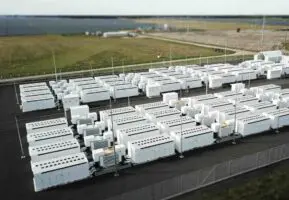German firm Solaria has released more details about how it plans to build a subsidy-free, 60MW solar PV facility in Spain – one of the first of almost 1800MW of such projects in a country that cut all subsidies earlier this year. Solaria says the plant, to be built in 2013, will cost €60 million ($A75 million), or around $1.25/watt – that compares to $2.80 a watt for Australia’s planned Solar Flagships project (to be built in 2015).
Solaria estimates that it will be able to sell the electricity at €55-€60/MWh ($68-$75/MW), which will deliver an internal rate of return of 8-9 per cent. If it can tap into large electricity users – the self-consumption market – it could get up to twice the price. “We will build it in the second half of 2013 because we think the cost of PV will have dropped enough by then and, given the irradiation in Spain, will be totally competitive (with fossil fuels),” a company spokesperson said last week.
The emergence of solar PV as a “mature energy” technology that can compete with traditional energy sources without help is, of course, a game changer for the entire energy industry. Gehrlicher, another German company that plans similar projects in Spain, says solar PV will target the “self-consumption” market, for both small and large businesses and installations, while large-scale facilities will be built only by large, deep pocketed corporations – be they industrial or mining users, or banks and pension funds. Robert Kroni, the head of Swiss engineering company Jendra Power, says solar will be produced in Europe at a cost of 6c-7c/kWh – cheaper than gas and most new-build coal.
The merit order impact in Texas
A new report analysing the state of Texas – where extreme weather conditions and a water shortage have turned its grid into one of the most vulnerable in the US – has concluded that the addition of solar PV would have reduced electricity costs, and helped avoid a series of outages that plagued the state in the crippling summer heat of 2011.
The report by consultants The Battle Group is one of the first to consider the merit order impact of solar in the US. It concluded that the addition of solar PV to the Texas grid would have reduced wholesale electricity costs by up to $520 million, by delivering electricity at times of peak demand and avoiding costly infrastructure investment.
The analysis canvassed a range of scenarios from 1000MW to 5000MW. Like a similar study conducted by the Melbourne Energy Institute in Australia, along with Beyond Zero Emissions, it noted that the scale of “merit order benefits” declined with more solar added, but it concluded that solar could save customers an average $155-$281/MWh, because it would offset demand from the grid when more expensive peaking plant would normally be deployed. Adding in the benefit of avoided emissions, the savings rise to $216-$343/MWh. “This suggests that, at least during the summer months when solar PV production and energy prices are highest, the short-term benefits of increased solar PV production approach or exceed the likely cost of incremental solar PV generation,” the report concluded.
Pat Wood, a former chairman of the Public Utility Commission of Texas, said solar is attractive because it “delivers on peak, it doesn’t use water and it doesn’t create any smog pollution. It is increasingly affordable, competing favorably with other peak-of-the-day resources.” Last year, the Texas market operator was forced to curb demand on six different occasions because of record electricity use caused by soaring summer temperatures. Similar events are anticipated this summer.
The Solar Energy Industries Association said the double benefit of lower electricity costs and increased reliability makes solar a clear choice for the state. Wood also noted that the solar was “quick to market, meaning capacity could be built quickly, saved water, and reduced costs.
Can I have a hair curler with that PV system please?
One reader sent through this interesting item, showing that solar PV is now emerging as a commodity product, with deals being offered on installation, just as they might for a kayaking trip, a shampoo treatment or a meal at a restaurant. This one offered a 1.5kW system for $89, representing savings of $3,999 over 10 years. We don’t offer any commentary on whether that’s a good deal or not, but it’s possibly timely that the Clean Energy Council has produced this document on tips on buying solar.
Big deals in big solar
Last week we reported on Toshiba’s plans to build a 100MW solar PV plant near the destroyed Fukushima nuclear plant. Since then, coal company Mitsui Matsushima has said it will enter the solar energy business, planning to build a solar PV manufacturing facility and a 2MW solar PV plant in Fukushima.
US wind and solar giant NextEra has reportedly won the auction to buy the 1,000MW Blythe solar project in California, while solar tower developer BrightSource has won the bidding for the 500MW Palen Solar project, also in California. These and other projects are for sale following the collapse of Solar Trust of America.
Campbell Soup has inaugurated a 9.8MW solar PV plant at its production facility in Oregon. It was built by SunPower.








